Honoring Mental Health Month with a Micro-grant for Early Career Circus Artists
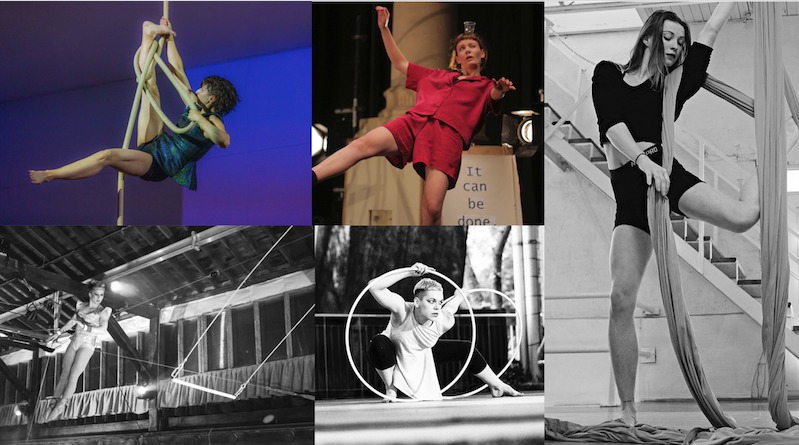
Lynsey Wyatt wanted to do something helpful and creative during the pandemic, so she created the COVID-19 Mircrogrant for Early Career Circus Artists. As an early career circus artist herself specializing in aerial silks and partner acrobatics, she understood the need. As owner of Cirqulation Aerial Arts & Acrobatics in Roanoke, VA. Wyatt says she firmly believes that circus arts can be harnessed to empower communities and advance the causes of equity and mental health.
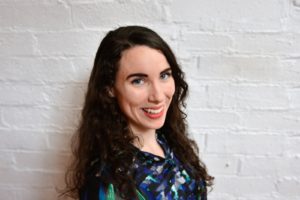
Wyatt explained how the genesis for the microgrant developed from a disappointing cancellation, “Before COVID-19 hit, I was working with Lisa Linger, founder of Mental Health in Motion and a dear friend and collaborator, on a show that provides a window into the often invisible experiences of those living with mental illness through empathy-evoking visual experiences of modern and aerial dance. While it was disappointing to have to put the show on hold, I still wanted to find a way to honor mental health month.”
“I also felt a strong desire to stay connected to the global circus community at a time when our whole industry feels like it is teetering on the edge of an uncertain future. By conceiving and developing a short act, the project provides an outlet for circus artists to express themselves and to honor mental health month in our unique way, harnessing inherent symbols within our movement disciplines to communicate powerful aspects of human experience.”
When asked about the mission, Wyatt explains, “The aim of the microgrant is to support early-career circus artists by fueling creativity and providing a platform for showcasing original creations that honor Mental Health Awareness Month. Our intention is to get artists’ creative juices flowing and encourage performances that inspire hope, caring, and a sense of connectedness.” She explains the works that emerged, “Powerful concepts are interwoven in their work, including self-worth, grief, depression and liberation.”
We are pleased to share the projects produced by the winners of the microgrants:
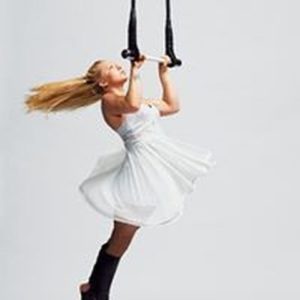
Jessica Niven grew up in Melbourne, Australia, practicing gymnastics, hockey, theatre, music and art, before completing a 3 year Bachelor’s Degree in Circus at NICA in Australia. She specialized in swinging trapeze and through that was led to a love of flying trapeze, which has more of a team spirit element. Through flying trapeze she found herself traveling the globe, having since worked in Australia, Bali, Thailand, Israel, the USA, England, Scotland, Wales, Turkey and France. She now practices and performs many circus disciplines but is drawn most to those which require collaboration with other people. Acts that require trust and belief in one another, which she thinks is what the world needs more of.
Asked what challenges she faced while trying to address mental health through the medium of acrobatics, she explained,“The way our act started in creation it clearly came across as a mother struggling to entertain her 2 children, but we wanted to touch on broader topics than just this story. So we kept the movement patterns but tried to reign in our facial expressions to allow a broader reception of what our actions could represent. We also didn’t try to force too many angles from the very beginning, allowing them to emerge organically as the choreography was built and fine-tuned. Group acrobatics naturally lends itself towards the metaphor of weight on your shoulders, so in that sense using acrobatics to address mental health was quite simple. If we had chosen a different medium I can see it being more difficult.”
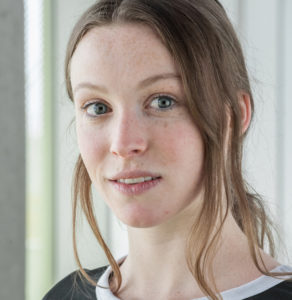
Sabine Van Rensburg, originally from Cape Town South Africa, is a professional circus artist based in Montreal. Having started her circus career at the Zip Zap Circus School, she is now a graduate from the National Circus School of Montreal, and currently working with The 7 Fingers (Les 7 Doigts de la Main). Sabine specializes in aerial silks, duo trapeze and acrobatic movement.
Van Rensburg describes what her performance is meant to convey and why the micro-grant theme appealed to her “Coming from Cape Town, South Africa, and having been raised in a social circus, I believe in the value of positively impacting those around me through art, however, in these uncertain times, life as an artist has slowed down tremendously. We’re questioning our abilities and are unsure of our future. This micro-grant provided artists with a sense of purpose in uncertain times. By giving a deadline and an important message, it lit a fire within and the work just poured out. Having a project that I believe in during this time of limbo was truly a gift. I hope that my performance inspires people to find the determination and motivation to do whatever it is that they want and need. To find stability and comfort in challenging times. To uplift one another through patience and compassion, promoting social cohesion in a time of social distancing. Whether it is grief, trauma or any global adversity such as the Covid-19 pandemic, there is always a way to recover and rebuild. “
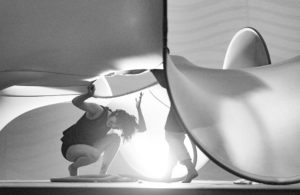
Sarah Muehlbauer‘s work defies categorization as much as she defies adversity, dancing between aesthetic and athletic disciplines as an artist, writer, and performer. Whether giving stirring form to feelings that might only be expressed through the intensity of circus spectacle, to the quiet everyday-resistance against a drab world with her wearables, her words and work are equal parts meditation and prayer… that art, hard work, and perseverance are the best defense against life’s hardships. While her work began as a solo exploration of chronic illness and the surrounding environment, it is shaped largely by multimedia collaboration. She focuses on projects that challenge widespread expectations concerning personal integrity, representation, and the unseen social aspects of health. Muehlbauer is a Wisconsin-born artist, an alumni of Tyler School of Art (MFA) and the University of Wisconsin-Madison’s (BFA) visual art departments. Major works include Ripple/Quake (2019); Things That Survived The Winter (2017); Wind At My Back (2012); Specter Animalia (2010); and solo show A House For Birds (2014). Muehlbauer was also the winner of the VSA Arts national young emerging artist award for artists with disabilities in 2008, for her work with performance, sculptural wearables, and video.
When asked if she finds circus to be a versatile medium to address social issues, Muehlbauer said, “I do find circus to be a versatile medium for addressing social issues. Circus allows you to see the body through a range of being highly “at-risk” to completely in control and owning the impossible, by human standards. As a metaphor, it has the potential to align nicely with any sort of at-risk cause or population, as a parallel for climate change, etc. I have always felt that dynamic circus elements need to be contextualized carefully in order to have meaning that goes beyond an abstract, visual experience, which is essentially called for in work that is socially engaged. This can come from many different storytelling directions, mediums, etc. What I liked about creating my piece Red Tape was the ability to use the video frame to locate intimacy between the body and apparatus that would be lost from a distance. Editing also opened up a window to tie together concepts and images that might not choreograph neatly into a standard act but can exist together through non-linear editing. Obviously the loss of in-person presence makes circus into an entirely different experience, and there is a lot of value in sharing time and space for communication through the body, in any form. But I’m also excited because there’s the potential to create meaningful stories that can be shared in a way that feels fresh, and could reach a lot of people.”
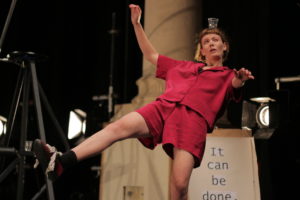
Fiona Salisbury is a multidisciplinary artist passionate about the research and translation of balancing technique (and the losing of it) into various mediums, including physical comedy, visual arts and participation. She is currently developing her solo show Making Molasses– a tightwire and physical comedy show which seeks to find value in the balancing ‘by-products’ of wobbling and failure. Her aim is to prioritize play over productivity, ask the audience their thoughts on the subject and joyfully disrupt the bond between self-worth and success. Since graduating from Circomedia BA course in 2018, she co-created Bull in a China Shop Project with Valentina Solari to support each other in their circus research and performance, produced surreal comedy show Fisheads with Ayla Windrich and is currently involved in social circus projects for refugees and unaccompanied minors in Athens.
She describes the research that went into her performance “Research to create this piece has been fairly oxymoronic– from attempting to manufacture unintentional falls to choreographing involuntary movements. Mainly, I wanted to incorporate genuine wobbling and falls from the wire, to include these moments I had to work on an edge between success and failure– on the limit of my balancing capability. This included tricks I would not consider ‘performance ready’– ones which require full concentration, a certain degree of recovery and are far from perfect or predictable. As well as experimenting with inducing a loss of balance by blocking or interfering with my eyesight. The hand and arm choreographies were attempts to choreograph between voluntary and involuntary movement and allowing the balance to dictate where my hand should go next as much as I choose to do so, the voluntary action such as moving my hand to my face also acted to induce a loss of balance which would create an involuntary reaction to recover. Finally, I researched unpredictable pathways on the wire structure, aiming to use the non-success orientated parts- the platform, the pole and the floor.”
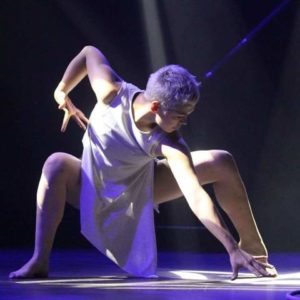
Matylda Górska is a self-taught performer with 10 years of experience. Within her career, she’s been performing in streams of contemporary circus, dance, movement theatre and fireshow. She won the 1st prize in the Polish National Circus Competition Cyrkulacje in 2016. After which, she joined the Kejos Theater company and co-created one of the first contemporary circus plays in Poland, Nevertown. Currently, she keeps creating and performing in different projects (solo, duo, groups) along with teaching circus and movement. Her shows and workshops tour all over, e.g. in Israel, France, Belgium, Italy, Germany, Netherlands, Slovenia, Croatia, Poland.
Asked what she discovered about her work as a circus artist through using the medium of technology in telling your story, Górska replied, “I discovered that a video is a completely different medium and I learned a lot about working with it. Different things look good on video and live. Some things are impossible to transfer, while others (details, small moves) can be highlighted. On the other hand, it gives the opportunity to reshoot some sequences (which can be good and bad, because it motivates you less to succeed in the first shot). I also rediscovered the importance of the public and live performance — there is nothing that can substitute this thrill and energy. I think that’s the biggest difference in new media.”
Editor's Note: At StageLync, an international platform for the performing arts, we celebrate the diversity of our writers' backgrounds. We recognize and support their choice to use either American or British English in their articles, respecting their individual preferences and origins. This policy allows us to embrace a wide range of linguistic expressions, enriching our content and reflecting the global nature of our community.
🎧 Join us on the StageLync Podcast for inspiring stories from the world of performing arts! Tune in to hear from the creative minds who bring magic to life, both onstage and behind the scenes. 🎙️ 👉 Listen now!
